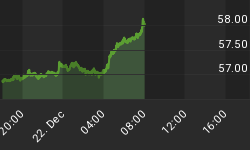Fed's First Step
When the FOMC members woke up on Friday morning and saw the Nikkei 225 down almost 900 points and other foreign markets down sharply, they had no choice but to unanimously vote to cut a discount rate by 50 basis points to prevent a US stock market meltdown.
Fearful of a drastic reaction by the markets and determined to show that it is not panicking, the Fed found a compromise by helping the banks with a discount rate, but waiting until the September 18th meeting to proceed with the fed funds rate adjustment.
Why will the Fed have to cut the fed funds rate?
-
The reduction of a discount rate is just a temporary patch. The move gave banks the ability to borrow from the Fed for cheap, extended the loan period to 30 days and relaxed certain technical restrictions on borrowing. The Fed can reduce the discount rate further to 5.25%, but this will not fix the problems. The Fed already tried injecting short term funds with the use of REPOs, but these attempts failed. The real problem is that the banks simply do not trust one another and are unwilling to provide each other with overnight loans. Secondly, trading on Mortgage Backed Securities (MBS) has almost been suspended except on the highest quality paper. Third, the crisis is spreading to the consumer side, as the banks are making it very difficult for customers to borrow against their homes by raising mortgage rates and tightening lending standards. As a result, a large part of the real estate market is freezing up.
-
The Fed is trying to buy time and save the real estate market as well as help many mortgage banks avoid bankruptcy. A large portion of the mortgage banks' revenue comes from MBS trading operations which used to be highly profitable. Now, the trading has all but stopped and bank profits have evaporated. Risks of further bankruptcies are rising even among the major players in the field. The only relatively reliable way to prevent a bankruptcy ripple effect is to support the consumer through cheaper credit and a lower fed funds rate.
To prevent a financial system crash and to relieve the credit crunch, a dramatic decrease in fed funds rates is required. Goldman Sachs is forecasting a 75 basis point cut by the end of the year. We believe this is a realistic prognosis.
In the backdrop of a credit crunch fear, the fed funds rate cuts will bring another big wave of monetary inflation to save the day.
Global Margin Call?
What happened around the globe last week? The main reason the market decline was so severe is not due to any particular source of fear but due to the yen carry trade unwinding. As we have mentioned many times, aggressive traders that move the markets (such as hedge funds) are highly leveraged. Leverage ratios are commonly 1:5, 1:10, 1:12, etc. Since most of the traders' debt is denominated in yen, a rise in the Japanese currency forced some participants to begin liquidating the positions in stocks and buy back the yen to pay their debts. This pushed the yen even higher and stocks lower creating more problems for other traders - a cascade effect.


Looking at the S&P 500 and the Nikkei charts, it appears that the world was on the edge of a global margin call. This would have meant a global equity crash. But the Fed was able to prevent this scenario for the time being.
Why Gold Indices Are Worst Performers
Historically, gold and silver stocks are among the most volatile sectors in the markets. With the Volatility Index (VIX) hitting its highest levels since 2002, the precious metals sector suffered as well. Even Apple, Inc., the Wall Street favorite, fell by 24% from peak to trough in just two weeks. Interestingly enough, HUI's peak to trough decline was 23%.

There are also other reasons why this correction was so severe. First, as we have discussed before, the XAU and HUI indices are composed mostly of large producers that are experiencing rising costs and declining profit margins. Second, smaller producers and exploration stocks, also included in the indices, are often illiquid and small selling pressure can go a long way.
Even though many shorter term support levels on gold indices were penetrated, the major support levels of the last year and a half remain in force.
This is an excerpt from an RSG Newsletter published on August 19, 2007.















